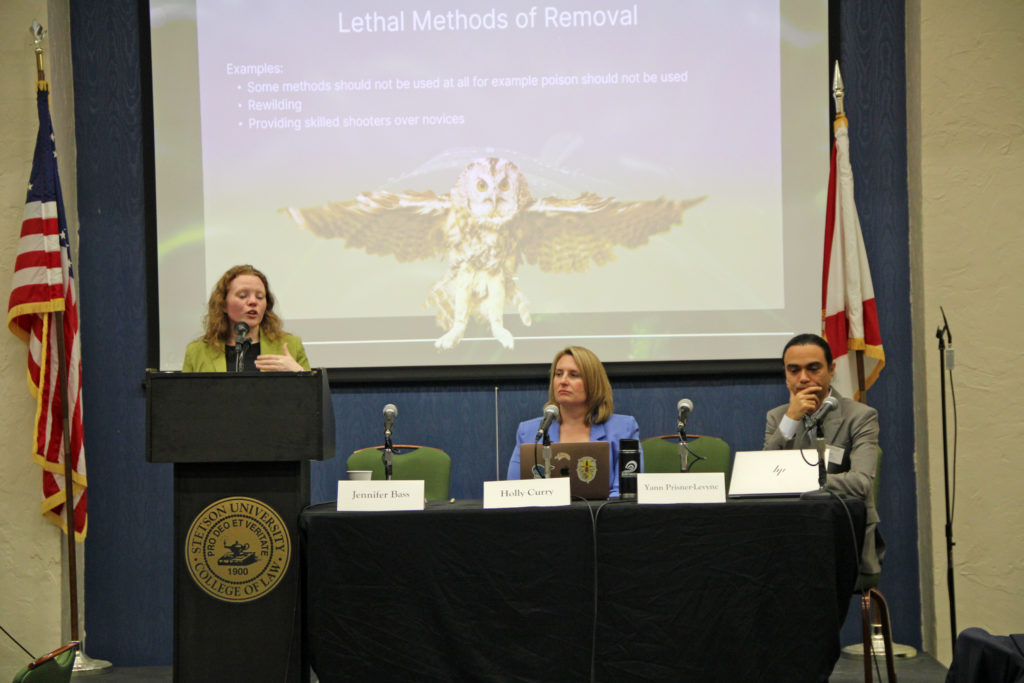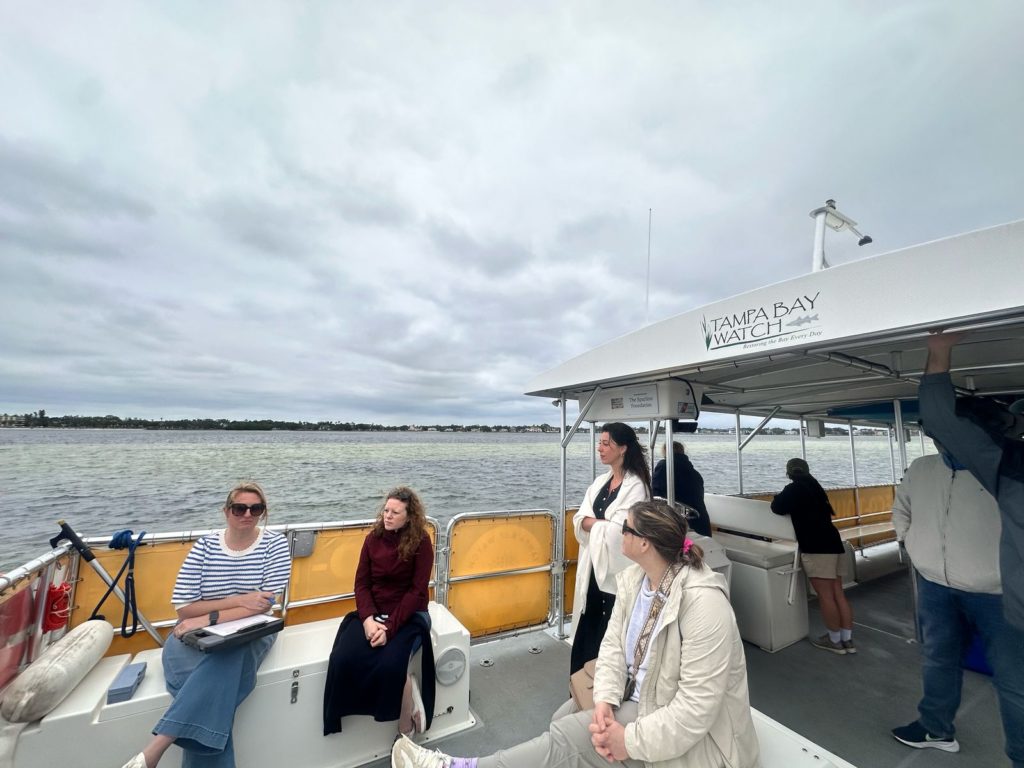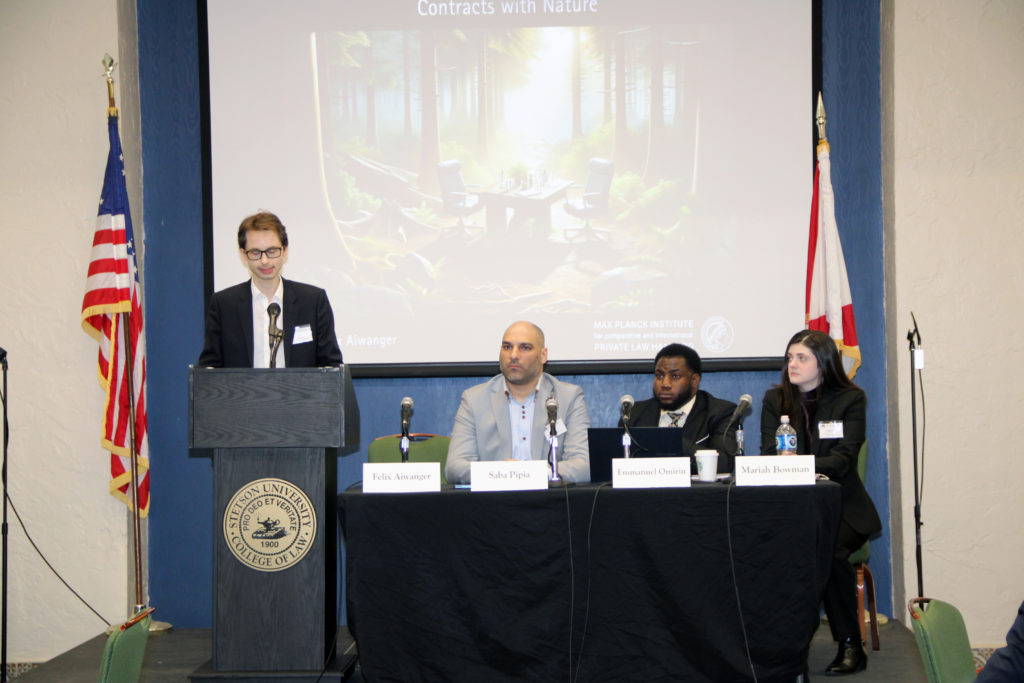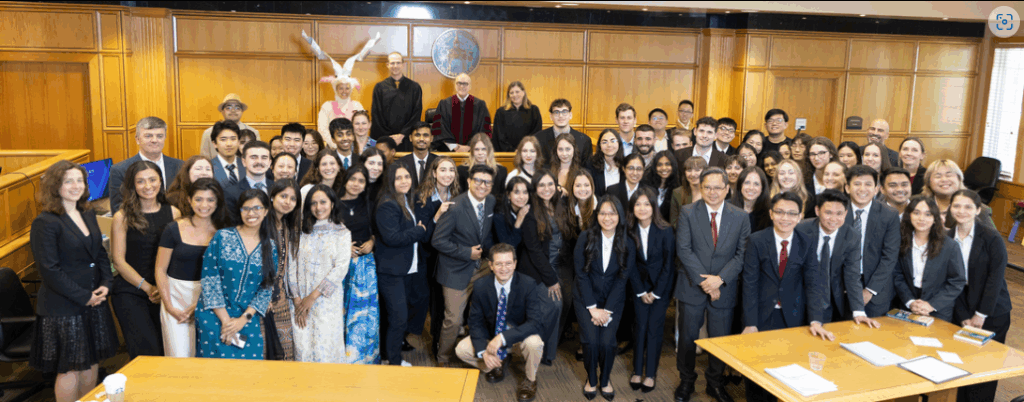Recap: International Wildlife Conference & IEMCC 2025

For the first time since the onset of the Covid 19 pandemic, experts in wildlife law gathered on the Stetson Law campus for the 21st International Wildlife Law Conference. The two-day event transitioned seamlessly into the final rounds of Stetson’s International Environmental Moot Court Competition, which takes place each year on Stetson Law’s Gulfport campus.
The back-to-back events brought legal scholars and law students together to explore laws relating to wildlife conservation and how it often interconnects with ethics, environmental sustainability, culture, public health, and many other facets of human society.
The conference kicked off with two tours of natural spaces near campus that teem with wildlife, Boyd Hill Nature Preserve and an exploration of the aquatic area near the nonprofit Tampa Bay Watch Discovery Center at the St. Pete Pier.
“There is nothing like being in each other’s presence – sharing a meal and having exchanges during the breaks can be almost as valuable, or even more so sometimes, than what we hear in the formal sessions,” said Law Professor and Director of Stetson’s Institute for Biodiversity Law and Policy Royal Gardner as the event began. “And of course, if you’re online, you can’t go on the field trip.”

Fresh ideas, lively conversations
The wildlife conference featured a broad array of panel discussions with presenters from around the globe. They explored such topics as the rights of Indigenous communities, animal rights and animal welfare, wildlife trade, and US and Florida wildlife issues.
During the panel on animal rights and welfare, Dr. Felix Aiwanger of the Max Planck Institute for Comparative and International Private Law in Hamburg, Germany, presented his paper titled “Contracts with Nature: Getting Nonhuman Interests at the Negotiating Table,” which explored ways to foster environmental conservation through contract law despite nature’s inability to advocate for itself.
“Contract negotiations allow us, or even force us, to understand another person’s needs and interests, and to factor them in when making decisions,” he said. “’You cannot negotiate with nature’ is a phrase that is often used. But contract law could lend itself to a framework that fosters holistic environmental policy.”

The event’s keynotes included a lecture by Dr. Same Ur Rahman, dean of Green International University in Lahore, Pakistan, who spoke about the species that inspired the IEMCC’s proceedings, the markhor, and national and international efforts to preserve the majestic goat species, which is the national animal of Pakistan.
Rahman gave a virtual presentation since he was unable to travel to the U.S. for the conference.
Welcoming international teams to the IEMCC
As the second day of the wildlife conference drew to a close, Stetson Law welcomed competitors to campus as it does each year, with a special edition of the Edward and Bonnie Foreman Biodiversity Lecture and IEMCC Welcome Reception.
The lecturer, Dr. Arie Trouwborst of Tilburg University in Tilburg, Netherlands, gave a lively presentation titled “Thinking Big and Aiming High: Taking the Objectives of Biodiversity Law and Policy Seriously.”
“He thinks deeply about how to improve the contribution of law at all levels to promote the conservation, restoration, and sustainable use of biodiversity,” Gardner said, introducing him. “But he’s not a mere academic. He frequently advises international entities such as wildlife conventions, the European Commission, the IUCN, national governments, and NGOs.”
Referencing The Simpsons and Lord of the Rings among other pop culture favorites, Trouwborst discussed humans’ tendency to place themselves at the center of everything, including their legal and moral codes, thereby destroying the species and ecosystems around them. Noting the extrinsic and intrinsic value of being considerate of non-human animals, he urged his audience to consider the ways in which legal systems can compel societies to operate from a place of compassion toward all species.
“We are not alone as a community, as a person, as a country. But we are also not alone as a species,” he said. “A key role is reserved for law to keep selfishness in check.”
See the full 2025 International Wildlife Conference agenda.
IEMCC 29 – problem & results
The International Wildlife Conference transitioned into a multi-day competition in which the world’s top environmental law moot court teams contended for the IEMCC championship.
The 2025 roster included two teams from Ukraine and, for the first time, a team from Bangladesh.

This year’s problem (or, in layman’s terms, fictional case around which the teams build their performance) involved a dispute between two fictional countries over trophy hunting of the (also fictitious) Royal Markhor.
Eighteen teams from twelve countries and four continents competed. The University of Chicago team prevailed. TheUniversity of the Philippines College of Law team was the runner-up. A competitor from the latter team, Sarahlyn Dato Revill,won best oralist in the final round.
The IEMCC continues to expand; Middlesex University Dubai is scheduled to hold the inaugural Middle East and North Africa Rounds in February 2026.
Learn more about the 2025 IEMCC finals.
Post date: May 1
Media contact: Kate Bradshaw
[email protected] | 727-430-1580